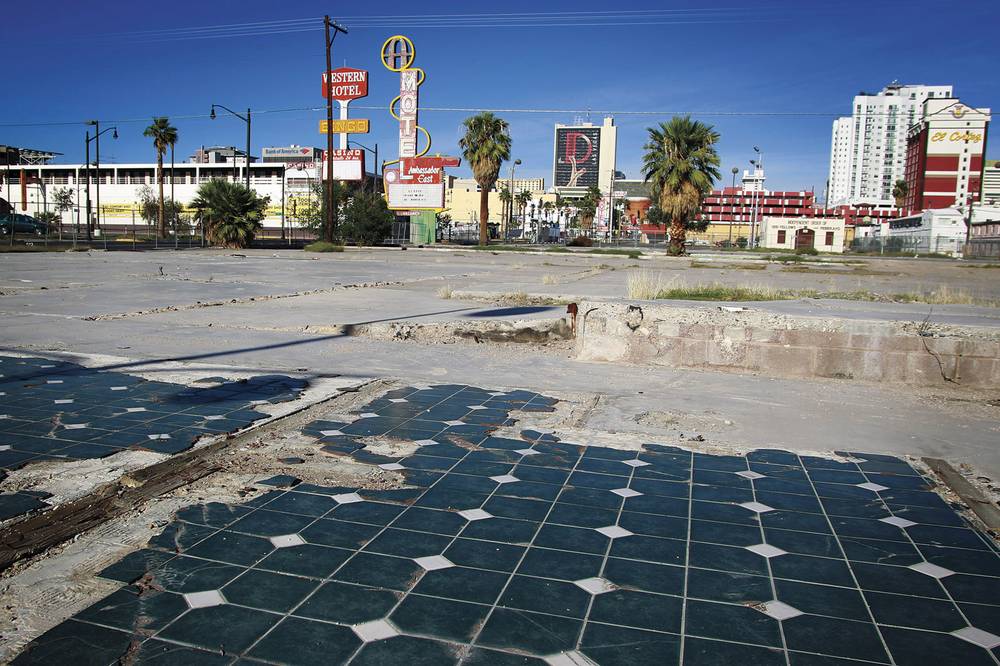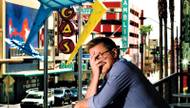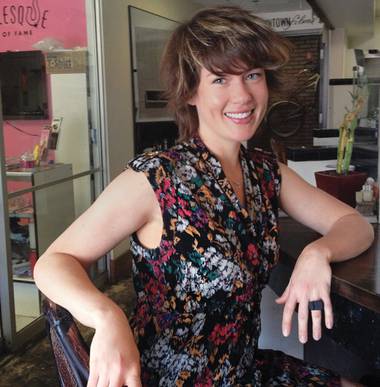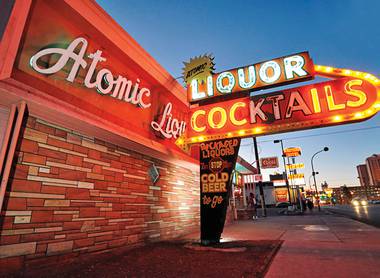When I confirmed that Downtown Project had bought seven acres at Fremont and 10th streets recently, I wrote and asked what their plans were for the property. Nothing yet, I was told, so I suggested a Six Flags. I was kidding, but it’s fun to imagine what to do with seven acres Downtown. My editor called for an Ikea. Luckily, I’m pretty sure she was kidding, too, because that’s also a terrible idea. Let’s also cross payday lenders and parking lots off the list.
The beauty of the site, which includes the massive empty lot where the old Ambassador Hotel used to sit, is that it’s a blank slate.
So, what to do?
Miriam Neet, an assistant professor at the UNLV School of Architecture, suggests that we pay attention to our surroundings.
“If we’re serious about building something for the residents and the urban fabric, you need to start thinking seriously about where we live, in terms of the natural context,” Neet says, adding: “We live in the desert.”
A true fact, one that Las Vegas often has ignored, opting for California tract homes and glass and steel spectacles that didn’t always fit with the landscape. Neet says we should look to other civilizations in hot, dry climates that have used resourceful architecture for thousands of years to create pleasant environments for living, working, playing, thinking and sharing.
Specifically, Neet is imagining shade structures like the Metropol Parasol in Seville, or the use of courtyards like at our own Fifth Street School.
Reed Kroloff, director of the Cranbrook Academy of Art and Art Museum and former editor-in-chief of Architecture magazine, recommends cutting up the block into narrow walkways and alleys, building structures close together to provide natural shade and creating something that resembles the outdoor market of a Middle Eastern city.
“It’s as hot in Morocco as in Las Vegas, but they responded to the conditions with an urbanism and architecture that protects the human body,” Kroloff says. The idea of a Middle Eastern-style souk would fit perfectly with Downtown Project’s emphasis on small businesses and community. Plus, if done right, tourists probably would flock to it, even if we want this to be for locals.
Local architect and urban planner Robert Fielden calls for something mixed use, which is a no-brainer—retail and offices on the lower floors and residential above. This doesn’t preclude the idea of the Middle Eastern market; you could build apartments above it.
(And in case you’re late to this conversation, we’re talking walkable urbanism, period. If you want something else, there’s plenty of it in the Valley, and it’s cheap and the parking is free.)
Fielden and local architect Eric Strain are concerned about affordability. Not everyone can shell out for the Ogden or the other higher-priced Downtown towers, and let’s hope Downtown Project considers diversity to be an important part of a rejuvenated urban core. Strain is against a big high-rise, calling for no more than eight stories that would provide a mix of housing options for seniors and lower-income residents, service workers, young families and, yes, hipsters. “Something to address the entire community,” he says.
Strain also notes that Downtown is badly in need of green space.
If Downtown Project really is focused on “return-on-community,” it might start by democratizing its development process, holding an open competition to decide what to do with one of its larger parcels.
Strain loves this idea and says, if done right, it could excite the community, garner national attention and get people talking about something other than Las Vegas foreclosures.
Kroloff’s firm ran two competitions that resulted in the High Line, the unused elevated freight rail line in New York City that became a very cool public park. The second competition was the more serious of the two, but Kroloff says the first, more open one got everyone’s creative juices flowing. One suggestion, for instance, was to create the world’s longest two-lane swimming pool, which would become an ice skating rink in winter. In that vein, how about a seven-acre swimming pool on the old Ambassador site, which could be a skating rink in winter?
Okay, we’ll settle for a grocery store.








Previous Discussion: